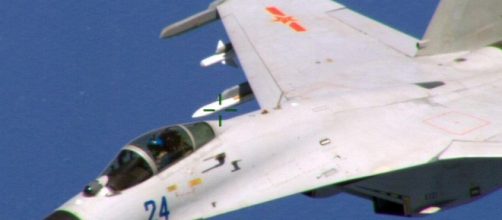There is another tension build up in the East China Sea after two fighter jets from China approached on Wednesday a U.S. and it came too close. The incident led the U.S. military to complain of unprofessional intercept by the two Sukhoi Su-30 jets.
The U.S. Air Force WC-135 aircraft was a sniffer plane deployed to detect radiation in international airspace over the East China Sea. CNN reported that one of the Chinese jets flew as close as 150 feet to the U.S. plane. Business Insider reported that one of the Sukhoi Su-30 jets flew upside down, directly above the Air Force plane.
The twin-engine fighter aircraft was developed by the Sukhoi Aviation Corporation in Russia. The two-seater jet was developed as a multi-role fighter that can withstand all weather. It could be sent on air-to-air and air-to-surface deep interdiction mission.
Issue being addressed through channels
Lieutenant Colonel Lori Hodge, the spokesperson of the U.S. Air Force, said the incident is being addressed with China through the proper military and diplomatic channels. She said the maneuvers of the Chinese pilot and the speed and proximity of the two Chinese jets were considered unprofessional. Hodge added a military investigation is underway.
The mission of the WC-135, also called the “Constant Phoenix,” was to detect evidence of possible nuclear tests by North Korea.
It tracks radioactivity by the collection of particles and chemical substances samples. The U.S. Air Force jet has been deployed in the region in the past.
Second disturbance between Chinese and U.S. aircraft in 2017
Even before the Wednesday incident, tensions have been high in the region because of China’s suspicion of American activity near the international waters known for its resources. In February, the U.S. sent an aircraft carrier on routine operations in the South China Sea. It came with a fleet of supporting warships. Washington deployed the air and sea craft even if China warned the U.S. of challenging the country’s sovereignty in the region where other Asian nations are also claiming some islands and territories.
A similar intercept by two Chinese fighter jets of a U.S. maritime reconnaissance plane on a routine patrol occurred in May 2016 over the South China Sea. In February, a U.S. Navy jet had to change its course after a Chinese surveillance aircraft, People’s Liberation Army Air Force KJ-200, came within 1,000 feet of the U.S. plane which increased the possibility of a collision.


